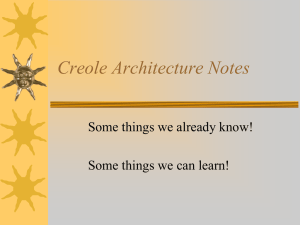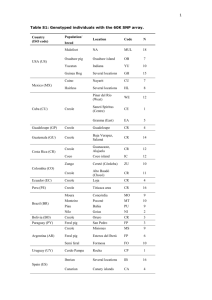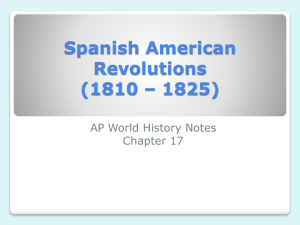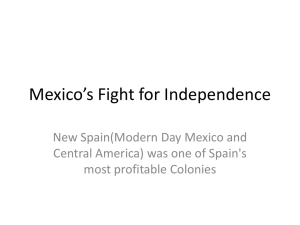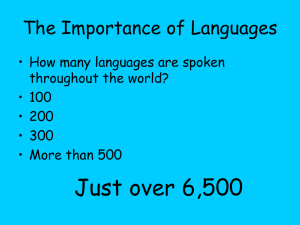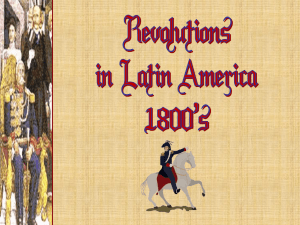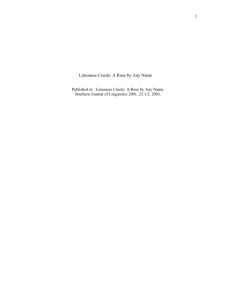The History and Development of a Mother-Tongue
advertisement
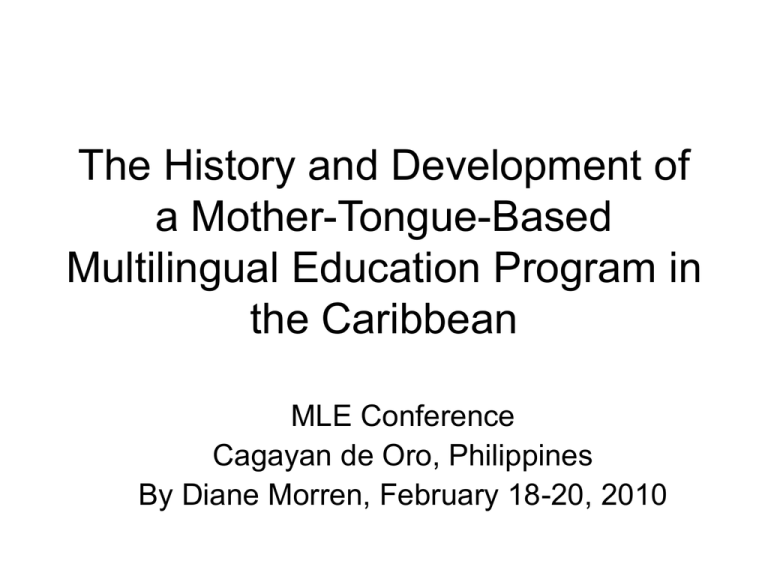
The History and Development of a Mother-Tongue-Based Multilingual Education Program in the Caribbean MLE Conference Cagayan de Oro, Philippines By Diane Morren, February 18-20, 2010 A Description of the San Andres Island Creole Reading and Writing program Outline: • Introduction to San Andres Island • Impetus for a creole education program on San Andres Island • Creation of a trilingual program • Development of educational materials • Publishing of materials Location of San Andres Island Languages of San Andres Island • Islander Creole English • International English • Spanish Domains of Creole language usage • Oral language for family communication • Oral language for communication with friends in the Creole community • Oral explanations in Creole schools and churches • Written poems and short stories (very few) with island “flavor” in a non-standardized writing system Domains of Spanish Usage • Commerce • Government offices • Tourism • Schools • Mass media (print media, audio and video media) Plan of action • Request for outside help to set up a Creole language educational program on San Andres – Trilingual – Incorporate traditional Creole values in the curriculum – Unique to the Island of San Andres (and sister island– Providence Island) Time Frame of San Andres Trilingual Education Program Request for help from the local leaders 1997 First teacher workshop 1998 Development/publication of curriculum & teacher training 1999 and 2001 Trilingual Education Program PrePrimer A&B First Grade Second Grade Third Grade Fourth Grade Fifth Grade Everything in Creole ABC’s Reading and writing in Creole Reading and writing in English Reading and writing in English Reading and Reading and writing in writing in English English Numbers Math in Creole Math in English Math in English & Spanish Math in English & Spanish Math in Spanish & English Social Science Concepts Social Science in Creole Social Science in Creole Social Science in English & Creole Social Science in English & Spanish Social Science in Spanish Trilingual Education Program (Cont’d.) Pre Primer A&B First Grade Natural Science Concepts Natural Natural Science Science in Creole in English Environme Oral ntal print English in Creole Second Grade Oral Spanish Third Grade Fourth Grade Fifth Grade Natural Science in English Natural Science in English & Spanish Natural Science in Spanish & English Reading & Writing in Spanish Reading & Writing in Spanish Reading & Writing in Spanish Method used to teach reading and writing • Modified Big Book method – Reasons for choosing the Big Book method • Fewer materials need to be printed. • One big book can be utilized in several ways. For example, a big book can be used for a reading lesson and a science lesson or social studies lesson, depending on the content. Examples Science Big Book BILLY DI BLAK KRAAB Billy dah wan big blak kraab weh liv iina wan big huol iina di bush. Billy ongl kom outa ihn huol fi luk ihn fuud, ahn fi kech som son. (excerpt from story) Social Science Big Book Wan Hapy Famaly Dis da fi mi famaly. Mi gat muma, pupa, sista, breda, granfaada an granmada. Wi da wan hapy famaly. (excerpt from story) Beginning Reading Big Book A Kyaan Stan Pikniny Wan taim wan uol man we niem “Misa Sono” when yuustu liv iina wan likl buod hous. Pattern to teach reading – First reading—Tell the students to listen to the story for a specific purpose such as the following examples: • Choose one: Setting, characters, main idea, predicting what will happen next, sequencing, etc. – Second reading—pick any two of the above that were not covered during the first reading and discuss them with the students. (They can listen for the new element during the story or they can pick it out after you read the story to them the second time.) Pattern to teach reading (cont’d.) – Next reading lesson or lessons another day: • (Refer to the story often; however, it is not necessary to read the whole story every time you teach one of the following lessons based on the story.) – Phonics—There will be a progression of phonic skills taught in this section. One aspect of the story will be selected to teach/reinforce a new letter or letter combination to the students. • • – Beginning consonants, ending consonants, middle consonants Consonant clusters, Vowels, vowel combinations Pattern to teach reading (Cont’d.) – Conventions of print, i.e., punctuation or capitalization—one aspect of the story will be referred to that you can use to teach punctuation or capitalization. – Writing—There will be a writing lesson with each story. Sometimes the writing lesson will be on a different day. It will always be related to the story in some way. It will not just be copying sentences from the story. How were the materials developed? • Teams of local Creole-speaking school teachers from three schools were involved. • Each group of teachers was primarily responsible for a certain content area of the curriculum. • Materials were checked by a local committee for spelling, grammar, and naturalness of speech. How were the materials published? • Materials were photocopied and bound at a local business on the island. • Later, the stories were put on overhead transparencies for ease of use. What have the results been? • At this time, there is a more favorable attitude toward Islander Creole English in the schools than there was 10 years ago. • Teachers on the island have asked for more teacher training in using the materials, general educational methods and classroom management. Questions? Thank you! Contact me with questions and/or comments at diane_morren@gial.edu
